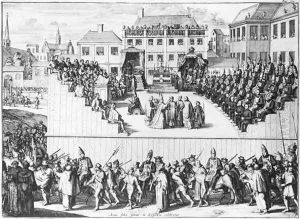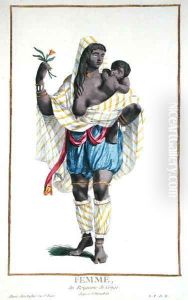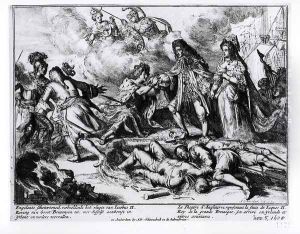Adriaan Schoonebeek Paintings
Adriaan Schoonebeek was a Dutch artist born in 1658 in Amsterdam, Netherlands. His father, Pieter Schoonebeek, was also an artist, which likely provided Adriaan with an early exposure to the world of art. Schoonebeek primarily worked as an engraver and publisher. He is known to have been active during the Dutch Golden Age, a period renowned for its remarkable achievements in the arts, sciences, trade, and philosophy.
Schoonebeek's work often involved producing engravings for books, a common practice in the 17th century when illustrated books were in demand. He was engaged in the reproduction of works by other artists as well as creating original compositions. His engravings covered a wide range of subjects, including historical scenes, portraits, and religious imagery.
In addition to his work in Amsterdam, Schoonebeek traveled to Russia in the late 17th century. He was invited by the Russian Tsar Peter the Great, who was eager to modernize his empire and sought to bring in Western artists and craftsmen to help achieve this goal. Schoonebeek's experiences in Russia influenced his work, and he produced engravings depicting Russian life and customs, which were novel to Western European audiences.
Schoonebeek's contributions to the world of printmaking and his role in cultural exchange between Russia and the Netherlands are notable aspects of his career. Unfortunately, like many artists of his time, Schoonebeek did not achieve significant fame during his lifetime. His death occurred in 1705, and since then, his works have been studied by art historians interested in the printmaking practices of the Dutch Golden Age and the early cultural interactions between Western Europe and Russia.


